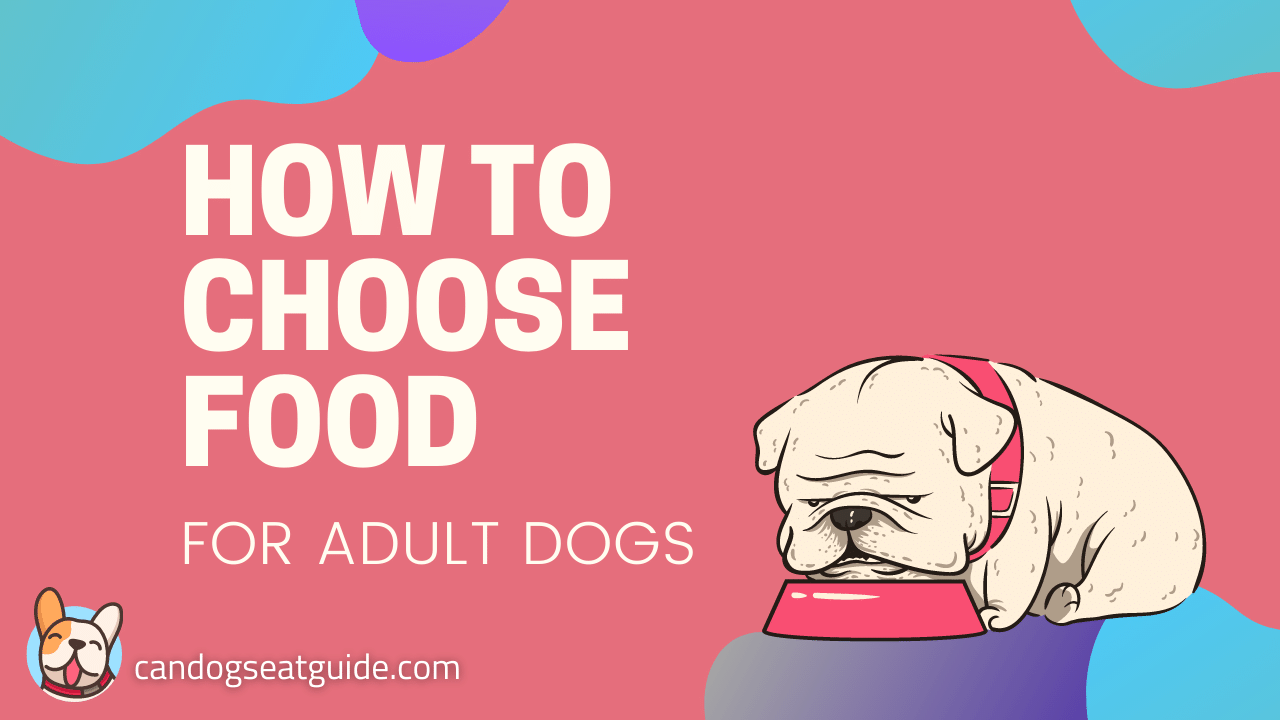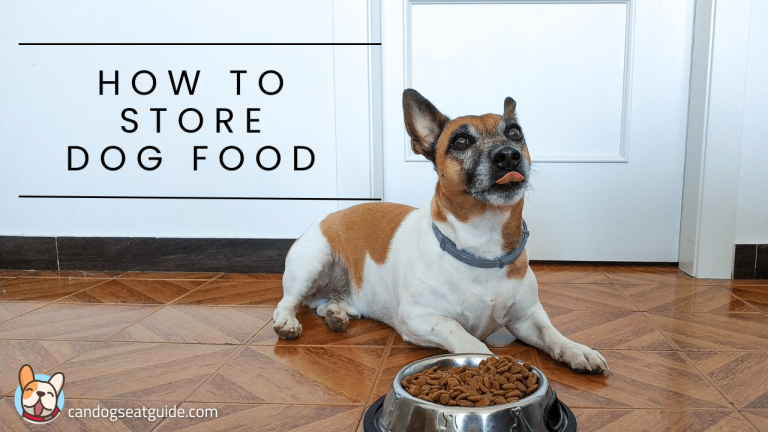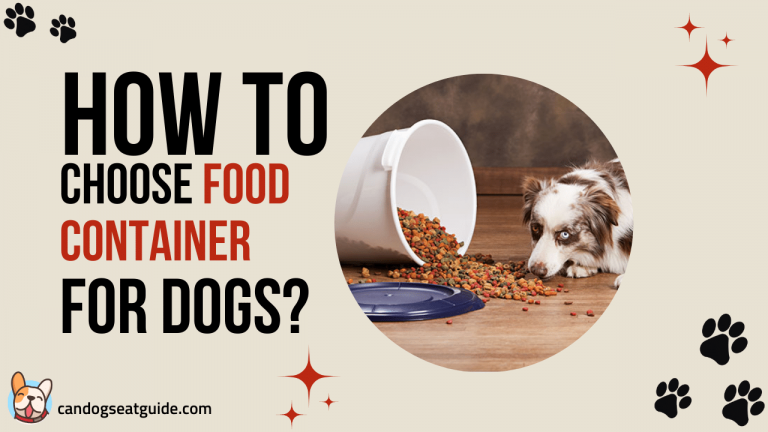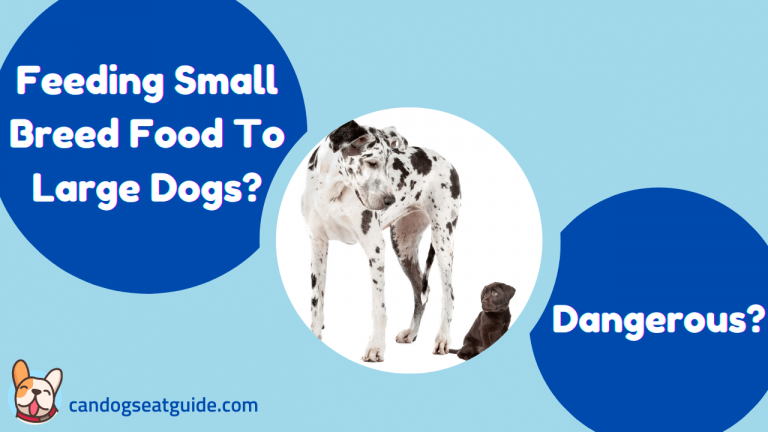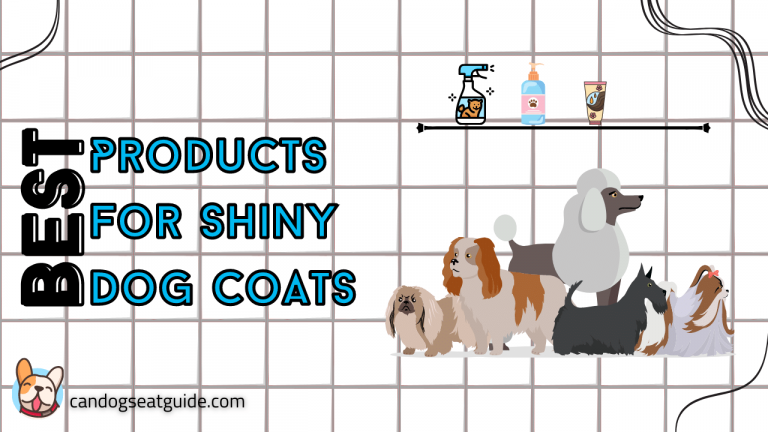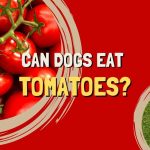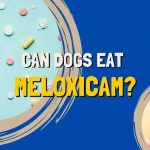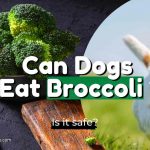Is your puppy no puppy anymore or have you got a new dog? Are you wondering what food this doggo needs now? What type of care does it need? Do you wonder if your dog needs some supplements?
All this information you can find on our website but today we will discuss and share our tips on how to choose food for adult dogs, specifically the best food that is giving the best quality nutrition.
We are not going to share with you products, we are here to give you the information for nutrition you need when you are searching for food.
If your dog is having problems with the skin or coat, here, we give tips and what food you can give them to make the coat shiny.
Life Stages of Dogs
The life stages of a dog’s life are three: puppyhood, adulthood, and senior ages.
Adulthood starts at a different age for different breeds because of the difference in their sizes. As you can see in the table below some puppies become adults at 8 months while others need 24 months.
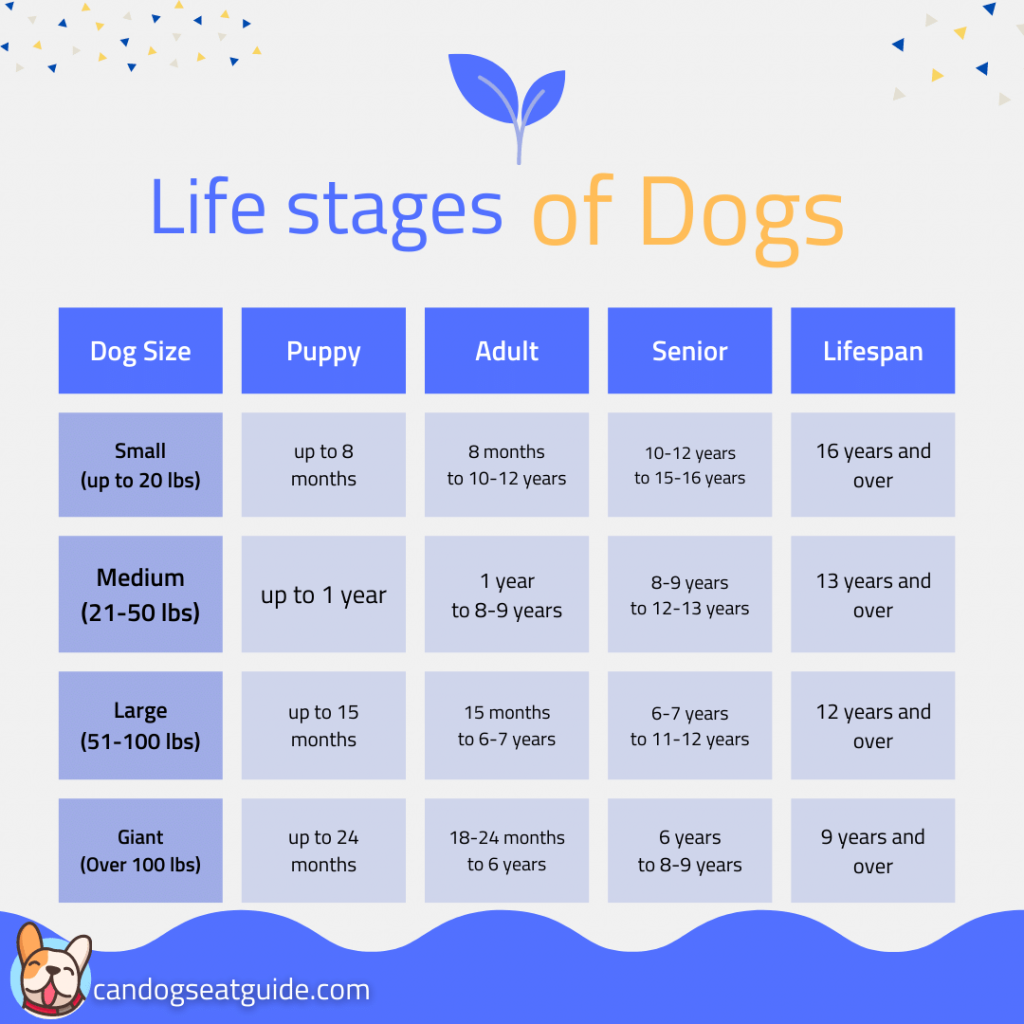
I want to remind you again that not all dogs are the same, each is individual. Things that work for mine, maybe won’t work for yours. The same goes for the lifespan and the ages where the dog gets in the different stages.
Don’t forget that dogs need at least once a year vet visitation. This will make you feel calm when you know that everything is fine. But I strongly recommend at least twice a year full check up on your dog so you can see if there are some health problems or deficiencies of vitamins and minerals, it’s better when you find the problem in the beginning.
Required Nutrition For Adult Dogs
While you are choosing food for adult dogs the most important thing you need to look for is nutrition. Your dog may have some specific needs and that’s why you should choose food that is specifically for your dog.
1. Fatty Acids
The minimum amount of fats that should be in dog food is 5%, but usually, commercial food contains 10%-15% of fats. You will be like but that is twice even thrice more than the minimum that is required, yes, it’s. As we, humans, need fat, dogs also need it and many vets recommend more than 5% because it’s very little.
Like puppies need around 10% to 25% of fat, they get into the adult stage and suddenly the fat amount drops to 5%. It will cause a lot of health problems, a lot of stress to dogs’ bodies, regression in the growth process, and a weak immune system. That’s why we should always consult with the vet for our dogs’ needs.
2. Protein
It’s very important for the food you choose for your adult dog to contain high-quality protein as a first ingredient. As for canned food usually, the first ingredient is water or broth and that’s fine but you must find meat at the very beginning of the ingredient list.
The food for adult dogs should contain protein in the diapason 15% to 23%. This is the optimal diapason for maintaining weight and muscle mass. Most foods contain 18% of protein.
Sources of quality protein:
3. Carbs
Dog food can be made up of 50% carbohydrates, of which around 3%-4% are dietary fiber.
Let’s first talk about carbohydrates and down you can read more about fiber.
Carbs are the main source of energy. There are 2 types of carbs simple and complex ones.
Simple carbs are more easily digested and it happens quicker than complex carbohydrates, but they are a source of short-term energy. Complex crabs provide slow-release energy, they are digested slower but help regulate the metabolism.
Best sources of carbohydrates:
- potatoes
- sweet potatoes
- apples
- pumpkin
- oats
- wheat

4. Fiber
There are two types of fiber that dogs need:
- soluble fiber;
- insoluble fiber.
Soluble fiber dissolves in water. It improves digestion and reduces blood cholesterol and sugar. That way it also reduces the risk of diabetes.
Insoluble fiber helps in softening the stool. It is the main helper of the bowel and the regular poop. Supports insulin sensitivity.
If your dog suffers from constipation it means that it doesn’t get enough fiber from the food. Then you should increase dogs’ fiber intake.
Best sources of fiber:
- broccoli
- kelp
- kale
- pumpkin
- green beans
- apples
5. Antioxidants
Dogs are omnivores so they need also fruits and veggies to be added to their menu. And what is a better way than directly from their main source of food?
If you see ingredients like berries, carrots, spinach, or pomegranate, you can be sure that the food is containing antioxidants which are very important for the immune systems of dogs.
Antioxidants are fighting the free radicals in the bodies of dogs.
6. Sodium
The food for adult dogs should contain a minimum amount of sodium – 0.06%. Everything above this can be totally fine for your dog but don’t give foods that are having too much salt, as too much sodium can cause serious health issues and can lead to loss of eyesight or worsen it.
Veterinarian Advice
When you start searching for puppy food, you should first consult with the vet of the adult dog. As they made advise you to check for food that doesn’t contain some ingredients or directly tell you which will be the best food for your dog as they already know the dog’s health condition.
Then when you finally know what to look for, start your research. But not before all of this because it will make it really confusing for you. Many people on the internet are advising this and this food but it may not be a good choice for your dog, so first listen to your vet.
Difference Between Small And Large Breeds
I think you have seen many foods that are specifically for some breeds like food for a chihuahua or food for a golden retriever. Or there are foods saying “for small breeds”. That is because you shouldn’t give a small dog food that is for a large breed or vice versa.
Why?
Small breeds and large breeds need different nutrition and that is because they have different needs. Large dogs usually are dogs with a lot of musculoskeletal problems.
Another reason is that small breeds should be fed with small size dry food while large dogs can choke on the small kibble that’s why for them there is a bigger-sized kibble. With wet food it is the same, small breeds need smaller chunks while large dogs don’t have problems with the bigger size of the chunks.
What Is AAFCO and Why Is It So Important?
AAFCO is the abbreviation of the Association of American Feed Control Officials. AAFCO is a non-profit, voluntary membership association.
What does AAFCO do?
They have established guidelines for ingredient definitions, product labels, feeding trials, and laboratory analyses of the nutrients a dog food contains.
Then the third-party testing agencies test them by the established guidelines.
What are the guidelines?
The guidelines include:
- Product Name
- Species of animal that the food is intended for
- Net quantity
- Calorie Content and Descriptive Terms
- Ingredients
- Nutritional Adequacy and Substantiation
- Nutrients
- Feeding directions
- Guaranteed Analysis
I made a table so it is easier for you when you look at the label if the brand really met the AAFCO requirements.
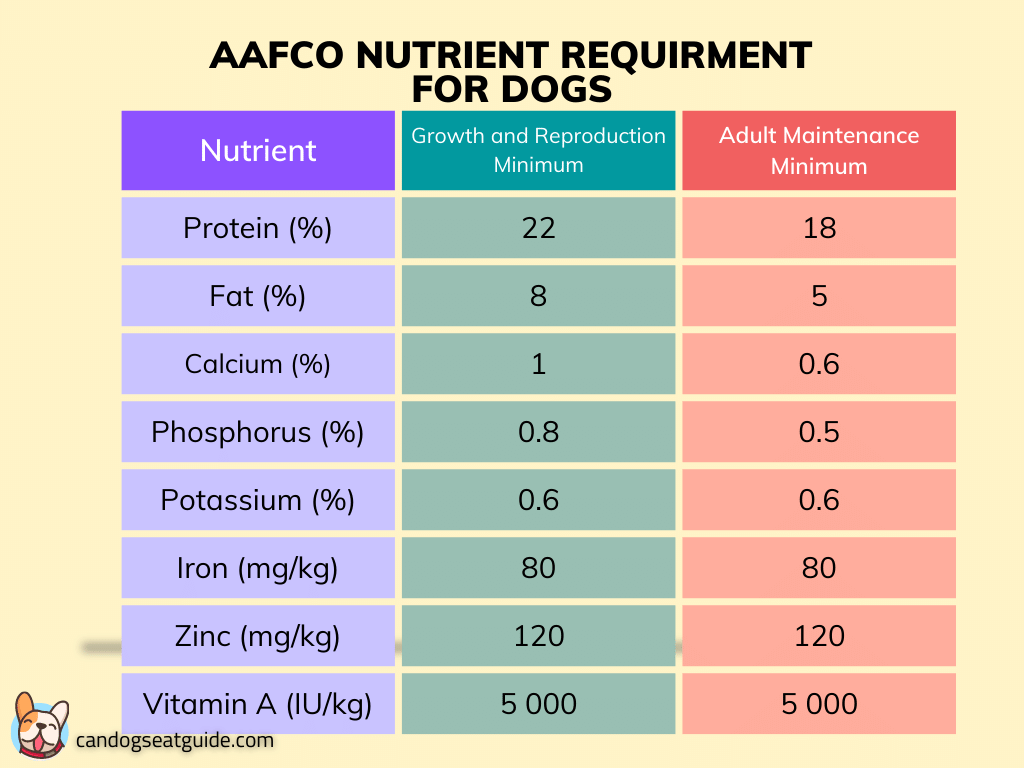
Check The Label And Ingredient List
The most important thing that you should search for is the following sentence:
Check the label
“Formulated to meet the nutritional levels established by the AAFCO dog food Nutrient Profiles for growth.
Then you should check the ingredient list and see if the food that your dog will eat is of good quality. If you are looking for food that will contain meat protein then you should search for it as the first ingredients should be chicken, lamb, turkey, or beef. But if you see meat-by products then ignore this food and watch the ingredients of the next one.
Food Allergies
Dogs with allergies will need hypoallergenic food that doesn’t contain the ingredient that triggers allergy reactions.
For example, if your dog has an allergy to grain food, then you should think of a grain-free diet but it should be supervised by a vet.
Dogs that are allergic to meat then will need a plant-based diet.
Wet food VS Dry Food for Adult Dogs
Pros of Wet Food:
- a great choice for picky eaters as they usually find the wet food yummier;
- it’s also good for dogs that don’t drink enough water throughout the day;
- long shelf life while being unopened;
- doesn’t contain artificial colors or preservatives.
Cons of Wet Food:
- more expensive than dry food when compared by amount and calories;
- short shelf life once it is opened;
- when opened it should be kept in the fridge and consumed by dogs in the next 2-3 days;
- not very easy to clean the bowl after it.
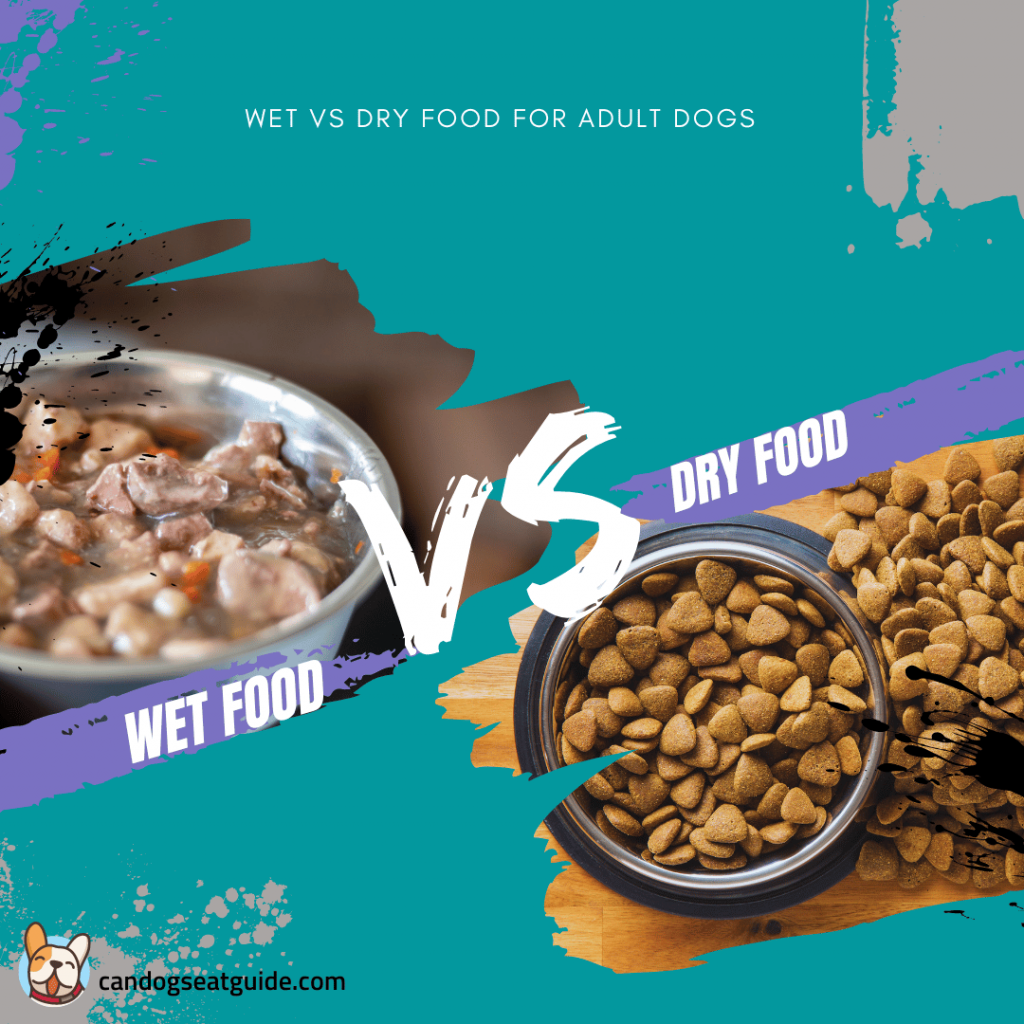
Pros of Dry Food:
- cheaper than wet food;
- chewable – helps with the built plaque-up and helps prevent it;
- easy to use – just pour in your dog’s bowl;
- easy to clean;
- very long shelf life both unopened and opened.
Cons of Dry Food:
- some dry foods contain artificial colors and preservatives;
- not as tasty as wet food.
Are you having a picky eater but can’t afford always to feed it with canned food? I have a few tricks that can help you with this problem.
You can at the beginning mix a bit of canned food with the dry food. And slowly decrease the amount of wet food.
Or you can try to add water to dry dog food and see if your dog likes it. But don’t add too much water. If you are worried that by mixing water and dry food nutrition will be less, read our guide: Should I Add Water To Dry Dog Food?
How Often Does An Adult Dog Need to Eat
An adult dog without any specific needs should eat twice a day. Sometimes you can give them treats but that shouldn’t be every day and treats should be only 10% of the daily calorie intake, don’t give more.
Overfeeding dogs can lead to weight gain, obesity, and many more health problems. But not eating enough food isn’t good too as it can lead to weight loss, anorexia, a weak immune system, etc.
That’s why it’s important to follow the recommended serving size written on the package of food or the amount of food the vet had said will be the best for your doggo.
And don’t forget that dogs need to burn some amount of the calories they ate, so make sure they have daily activities and if their health condition allows include exercises too.
Human Food For Adult Dogs
Dogs are omnivores which means they can eat both meat and plants. Dogs can eat human food as you know it’s part of their food. Many foods contain carrots, apples, green beans, and many more veggies and fruits. That’s because they are safe for dogs.
You can give fruits and vegetables as snacks to your dog but in small amounts and treats shouldn’t be more than 10% of their calorie intake for the day. There are many safe fruits and veggies but also some can be toxic to dogs and you should be avoiding them from the dog’s menu. For example, wild mushrooms, grapefruit, onion, and garlic are very toxic to dogs.
Can dogs eat food that is cooked by us?
This all depends on the way we have cooked it. If we keep it simple without salt, garlic, onion, or any seasoning, if we bake, steam, or boil it, and if we include only safe ingredients for dogs – then yes, dogs can eat cooked human food. But if there are many seasonings or toxic ingredients then the food can lead to an upset stomach, toxicity, and many health consequences.
Related guide: Can Dogs Eat Human Food? Here you can find examples and explanations for many types of human food.
Summary
If you have more tips and maybe some advice about how a dog owner should choose food for adult dogs then let us know. Or if you see that we have skipped something really important let us know in the comments.

